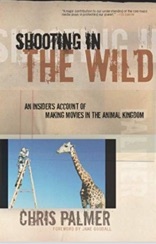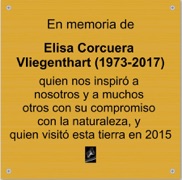Photography and journalism:
The project does not give interviews or makes public declarations, nor cooperates with those who give interviews or are otherwise publicly know. In case it is publicly exposed, reparation/compensation legal cases are initiated. The objective is to protect the Nature of the project from public exposure. No filming, photography or drones are allowed.
Wildlife and nature photography and filming add degrading pressure on nature protected areas, disturb and bring wild animals to exhaustion, open way to poachers and tourists, do not respect the privacy of the wilderness. Most of types of wildlife and nature photography and filmmaking can be classified as animal abuse. They seldom show natural animal behaviour.
The main purpose of this site is to exchange experience with restoration practitioners and lawyers protecting nature, working in comparable conditions of personal isolation, ecosystem degradation, remoteness and local stress.
Context:
- Ecosystem and soil severely degraded by human activities in the middle of the last century, a common situation for the region;
-
-The property has been managed since 2006 as a Private Protected Nature Area Pichimahuida, see page on the project;
-
-The focus is on repairing and healing nature, applied ecological and law’s restoration;
-
-Currently the project is the only property in the area where native trees are planted for the restoration of natural forest on a large scale. Trees have a good survival rate (85% or more). More than 230 000 trees of native species have been planted so far (2022);
-
-Some research projects are implemented;
-
-No tourism activities, including ecotourism and scientific tourism, are authorised in the Project,
The disrespectful pressure by the tourism industry made cooperation with most of these businesses impossible;
-
-Collaboration is ensured with those who understand the importance of the avoidance of the public exhibition of the project.
Acting on the basis of personal responsibility and privileging individual actions
aimed at effective and hands-on protection of Nature’s rights.
Monetising nature does not protect it.
The most promising collaboration partners and teachers have been
Nature, plants and animals from whom we learnt the most gratifying
wisdom, despite the fact that we live on their territory, and also :
-
✓The community of private like-minded landowners, irrespectively of the location
of their land (nature does not have nationality), dedicated to preserve and
restore the land within their properties, whether at least at arm's length.
Information exchange networks linking them, and their unique,
diverse and very personal projects. These include such networks as:
- Information exchange network between legitimate (and therefore responsible) landowners
of the access to the LSR national park in the valley of the river Leones/Delta;
- Eurosite-European Land Conservation Network - community of European land conservation practitioners,
working under legislations, similar to the one applied in the project;
- International land conservation networks : landconservationnetwork.org ;
Private protected areas (by private landowners) shall not be confused with privately
protected areas (by non-State legal persons, like NGOs, associations, etc.), they
are different in many aspects of their functioning.
-
✓Practitioners in forestry and ecological restoration from different horizons:
-
- the forest engineer who designed the reforestation project;
-
- information provided by SAG Coyhaique on ecosystems of the region;
- collaboration with Conaf Tranquilo on reforestation and issues of the national park;
-
- members of SER (International Society of Ecological Restoration),
in particular restoration projects in Europe (f.e. Iceland -
similar to Aysén’s large-scale ecosystem collapse; Finland - for its
private land protection schemes and large natural forest restoration
programmes).
-
✓Information of and contacts with national organisations, such as INIA, and
-
✓International organisations, such as UNESCO Man and the Biosphere programme and UNEP;
-
✓ Bird watchers of the region;
-
✓Law faculties of central universities, work with law students.
-
✓Helpful information was gathered through the funded by the project internship programme: Internships 2014-2017
and resulting work. The internship programme has changed and includes now mainly students in law.
✒︎ Collaboration with like-minded lawyers, who value Nature and its rights more than economic profits from its exploitation,
who could share the Pichi principle.
✒︎ The Project has opted for not continuing with invasive and stressful scientific research of Nature and wildlife. It has brought,
so far, unsolicited exposure and damage.
________________
-
✓For volunteers : please apply via WorkAway, workaway.info .
✓ For friends and previous volunteers (you know our contacts) : that’s what you can do.

Collaboration
The Project works on the basis of the principle of personal responsibility and therefore
participates only in unbiased partnerships of independent entities, acting as information exchange and mutual support networks and foundations. As a general rule, it does not join associations as, according to experience, they are:
-
-acting on the basis of diluted, and therefore, reduced responsibility;
-
-mainly acting as social “pendulums”;
-
-receiving significant amounts of financial support, but little goes to Nature itself.
The project does not participate in large tree planting campaigns, as they might not ensure the requested quality and the future of their main announced purpose - natural forest regeneration.

We are grateful to those who understand and share the motivations for, and ethics and variety of private conservation and ecosystem restoration, such as this very helpful publication by Jennifer Gooden and Richard Grenyer “The psychological appeal of owning private land for conservation”. It shows that people who own conservation-oriented land properties prioritized factors like autonomy, efficacy, connection, and meaning in their goals for a private land conservation program, that landowners incorporate conservation projects into their sense of identity.
Abstract: Continued threats to global biodiversity have stimulated interest in the private purchase of land for conservation. Though not a new phenomenon, private land conservation appears to be on the rise, and its ambiguous position between philanthropy and financial investment leads to questions about the nature of landowner motives, a model of PCA (privately conserved areas) engagement in which landowners became personally invested in the management of PCAs and in the nature they protected. PCAs can be conceptualized not merely as philanthropic endeavors or investments, but also as meaningful projects in which their owners engage. Land conservation programs might benefit from allowing landowner autonomy to the maximum extent possible, developing best practice standards against which landowners can assess their efficacy, and facilitating the development of landowner network.
Assessments of modern “ecological grief” are also valuable.
Commending those who made real contributions

“Community”: a body of persons of common interests scattered through a larger society, including the whole world.

Eurosite July 2022, in Publications




